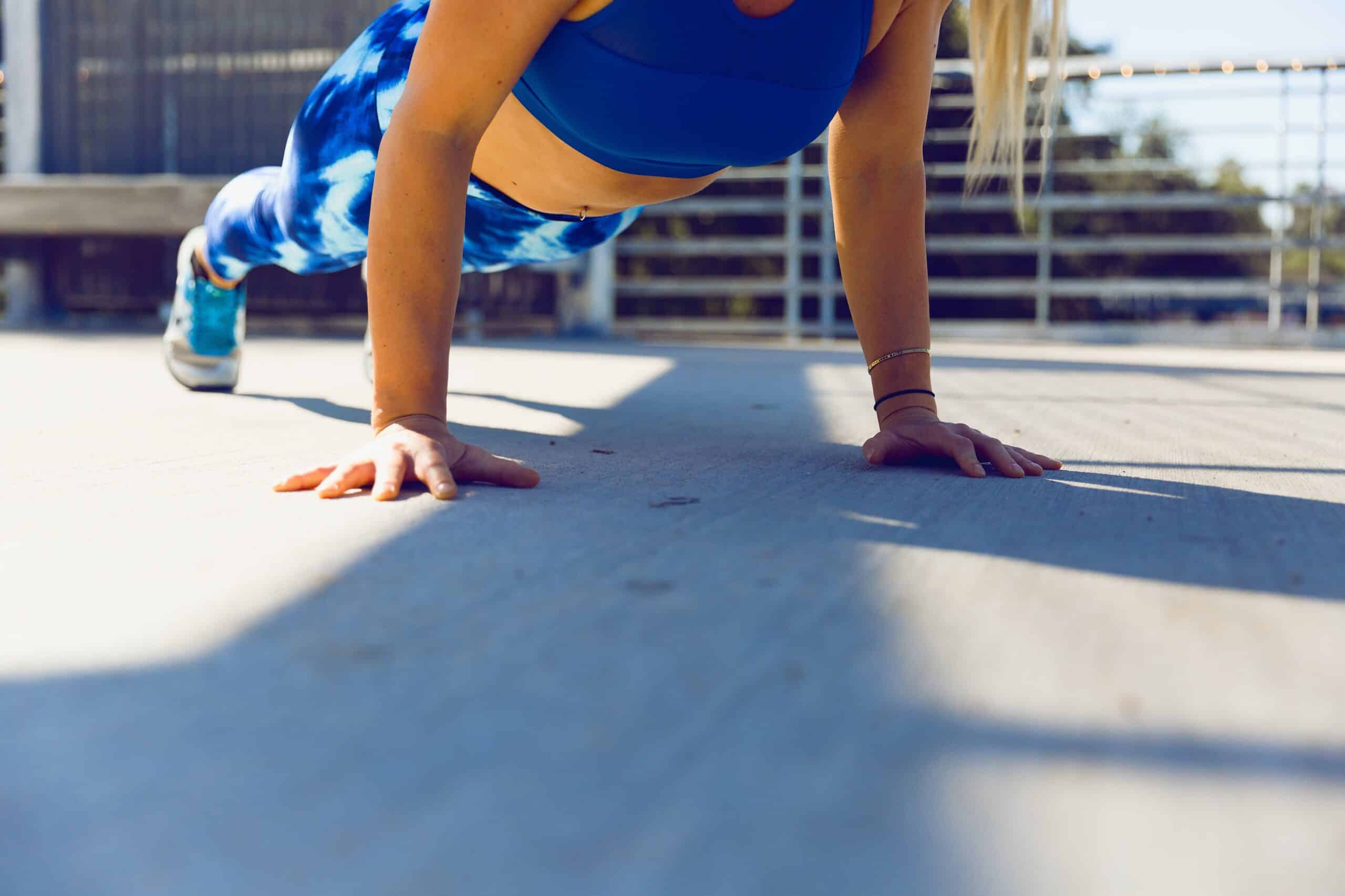Are you doing push-ups the right way?

One of the most challenging exercises and a big flex for those who work out regularly are Push-ups. Not only do push-ups demonstrate strength in the upper extremities, but also require a lot of core strength and lumbopelvic stability. However, while doing these heavy-duty push-ups, we load one of the more delicate joints in our body- the wrist. As discussed in a previous blog, the wrist joint was once a weight-bearing joint in primates but has now evolved for finer motor functions. Thus, when we load the wrist, there are a lot of considerations that we need to keep in mind.
Wrist Joint
Our hand is positioned at the end of the forearm and connected to one of its two bones (radius and ulna) by the radiocarpal joint or the wrist joint. The stability of the wrist joint is provided by ligaments. The flexor retinaculum ligament along with the three of the eight carpal bones form a canal called the carpal tunnel. Nerves, blood vessels, and muscle tendons pass through this tunnel. It is an ellipsoidal synovial joint that allows for flexion-extension and abduction-adduction. Pronation and supination occur at the radioulnar joint.
The wrist acts as a fulcrum for the long extrinsic muscles and tendons of the forearm. It also aids the movement of the oppositional thumb, a unique feature in apes and humans. Moreover, multiple tiny ligaments from the wrist connect to the muscles of the hand and are important for fine motor skills.
Push-ups
A push-up is a classic bodyweight exercise as it requires no equipment. It targets several key muscle groups in the upper body and effectively builds strength and lean muscle mass when performed correctly. Like any exercise, how you perform a push-up can have a big impact on what they do for you. Especially, where you align your hands for a push-up can have a serious effect on the muscles you are activating and how intensely they are activated.
To align yourself in the push-up position, you need to start in a high plank position. For that, you need to keep your hands slightly ahead of your shoulders, neck in line with your spine, toes curled in and your hips parallel to the floor. Without losing your key elements and keeping your shoulder blades separates at the back, you inhale and bend only at your elbows to lower your body down in one straight line from the top of your head to your heels. And as you exhale, you press your palms into the mat, to straighten the elbow and lift your body back to the high plank.

Building up to the push-up
Don’t be disheartened if you can’t do a push-up; you aren’t alone. The push-up is one of the most advanced mat exercises and needs utmost precision so that you don’t end up hurting your precious wrist joint. In Pilates, we build up from the basics and gradually build up to the advanced level of all exercises.
Starting with Sternum drops and Triceps dips against a wall in the standing position, we gradually move to an all-fours position to do the same. Once you are confident in the all-fours, we take it a notch higher to the Modified Plank and do Push-ups there. And after that, if you can hold the high plank long enough, we move to the Push-up. The super-advanced level of the Push-up starts with a Roll Down from the standing position, to walking out into the Plank, doing a few Push-ups, and then walking back to Roll up into a standing position. And the most challenging level is doing a Push-up on an unstable surface to add a balance challenge.
As we gradually build up the levels, the wrist also slowly becomes stronger and ready to bear more weight.
Wrist positions
Different hand positions in the plank, load different muscles in the upper body. Thus, the way you load the wrist becomes crucial while doing Push-ups.
A study was done to show electromyographic activity in the muscles of the shoulder joint complex while doing push-ups in different hand positions.
- When your palms are facing forward, the shoulder is in neutral. In this position, when you do a push-up, you work the Triceps and Serratus Anterior muscles.
- When you turn your fingers to point outwards, the shoulder is in external rotation. Here when you perform a push-up, you target the Deltoids and Biceps brachii.
- When you turn your palms to face inward, the shoulder is internally rotated. In this position, you target the Pectoralis or chest muscles and Triceps more during a push-up.
All throughout the push-ups though, the Serratus Anterior and Trapezius are working to stabilise the scapula. However, the study noted that when you are on an unstable surface as opposed to a stable surface, there is higher activation of the Serratus Anterior in the external rotation position of the hand. Coupling of the Serratus Anterior muscle with the upper and lower trapezius is required for the upward rotation of the scapula. These muscles provide stabilisation for the shoulder and chest joints, maintain the proper position of the scapula and provide dynamic stability while the arm is moving. Insufficient upward rotation of the scapula while raising the arm causes various pathological conditions, such as instability, rotator cuff tear, and impingement syndrome.
Conclusion
Doing the push-ups correctly can strengthen these muscles and prevent shoulder pain, in addition to taking the load away from the wrist joint. Nevertheless, listen to your body and go down a level in the push-up if you feel pinching in the wrist or the shoulder. Avoid variations that cause pain. Extra muscle activation isn’t worth an injury.
Do Pilates with us. Join a class.
Check out the video below to see the proper positions and movements of the various push-ups:
Written with Priyanka Gupta
